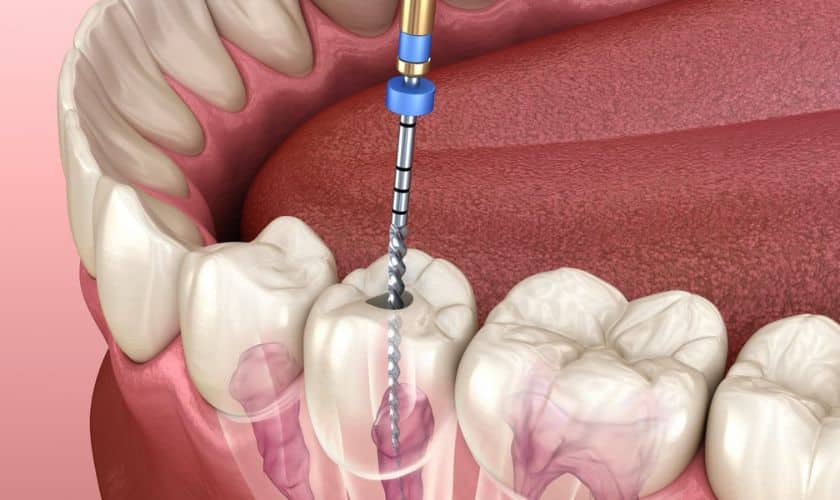Root canal treatment – two words that often invoke a sense of fear and anxiety. However, millions undergo this dental procedure each year, seeking relief from the excruciating pain caused by infected tooth pulp. Yet, a common misconception circulates: does the pain intensify in the days following a root canal? In this comprehensive guide, we will delve into the intricacies of root canal treatment, addressing the myths surrounding post-treatment discomfort. Understanding the process and debunking misconceptions is crucial for those considering or recovering from a root canal.
The Root Canal Process
Diagnosis and Assessment: The journey begins with a comprehensive examination by a dentist, who identifies the need for a root canal through various diagnostic tools, such as X-rays and pulp testing. This phase is crucial to pinpoint the location and severity of the infection.
Local Anesthesia: Once the affected tooth is identified, local anesthesia is administered to ensure the patient’s comfort during the procedure. Contrary to popular belief, modern anesthetics make the process relatively painless, and patients often report only mild discomfort during the numbing injection.
Access Opening: With the tooth numb, the dentist creates a small access opening on the tooth’s surface to reach the infected pulp. This step is vital for effectively removing the damaged tissue and facilitating the cleaning process.
Removal of Infected Pulp: The infected or damaged pulp is carefully removed using specialized instruments. This process involves cleaning out the pulp, nerve tissue, and any debris within the tooth’s canal. Thorough removal is crucial for preventing further infection and promoting effective healing.
Cleaning and Disinfection: The next stage involves cleaning and disinfecting the interior of the tooth’s canal. Dentists use antimicrobial solutions to eliminate any remaining bacteria and reduce the risk of reinfection. This meticulous cleaning sets the stage for a successful and enduring root canal.
Myth vs. Reality
Myth: The Pain Gets Worse After a Root Canal
Reality: Initial Discomfort is Normal
The myth that post-root canal pain escalates is a prevalent misunderstanding. In reality, it is normal to experience mild discomfort or sensitivity immediately after the procedure. This is primarily a response to the inflammation that naturally occurs during the treatment process. However, this discomfort is typically temporary, subsiding within a few days as the healing progresses.
Myth: If Pain Persists, the Root Canal Failed
Reality: Patience is Key
It’s not uncommon for patients to become concerned if they experience lingering discomfort. However, assuming that persistent pain indicates a failed root canal is a misconception. The reality is that complete healing takes time, and individual recovery periods can vary. Patience is crucial during this phase, and it’s important to recognize that some individuals may take longer than others to recover fully.
Myth: Post-Treatment Pain Means Another Root Canal
Reality: Follow-up Care is Essential
While discomfort after a root canal is expected, it does not necessarily imply the need for another procedure. Post-treatment pain can be attributed to various factors, such as temporary inflammation or an adjustment needed in the temporary crown. Regular follow-up appointments with the dentist are essential to address any concerns, evaluate the healing progress, and make any necessary adjustments.
Factors Influencing Post-Treatment Discomfort
To better comprehend post-root canal discomfort, it’s essential to consider the factors that can influence the recovery process:
- Severity of Infection: The extent of the initial infection plays a role in post-treatment discomfort. A more severe infection may result in a longer recovery period as the body works to repair the affected tissues.
- Individual Pain Threshold: Each person has a unique pain threshold. What might cause only mild discomfort for one individual could be more noticeable for another. Dentists take this into account when discussing expected post-treatment sensations.
- Adherence to Aftercare Instructions: Following the dentist’s post-treatment care instructions is crucial. Failure to do so could lead to complications or prolonged discomfort. This includes avoiding certain foods, taking prescribed medications, and maintaining excellent oral hygiene.
Managing Post-Treatment Discomfort
- Over-the-counter Pain Medication: Non-prescription pain relievers like ibuprofen can be effective in managing mild to moderate discomfort. It’s essential to follow the dentist’s recommendations and adhere to the suggested dosage.
- Cold Compresses: Applying a cold compress to the affected area can help reduce inflammation and provide relief. Using a cloth or towel to protect the skin from direct contact with the cold pack is advisable.
- Rest and Elevate: Resting and keeping the head elevated, especially during the initial days after the procedure, can minimize swelling and discomfort.
- Stay Hydrated and Choose Soft Foods: Staying hydrated aids in the healing process, and opting for softer foods during the initial recovery period prevents unnecessary stress on the treated tooth.
The notion that tooth pain increases days after a root canal is a myth rooted in misunderstanding. While some discomfort is normal during the healing process, severe pain is not the norm. Understanding the factors influencing post-treatment sensations and adhering to aftercare instructions are crucial for a smooth recovery. By debunking myths and understanding the realities of root canal recovery, you can approach the process with confidence, knowing that the discomfort is temporary and the relief it brings is lasting.




